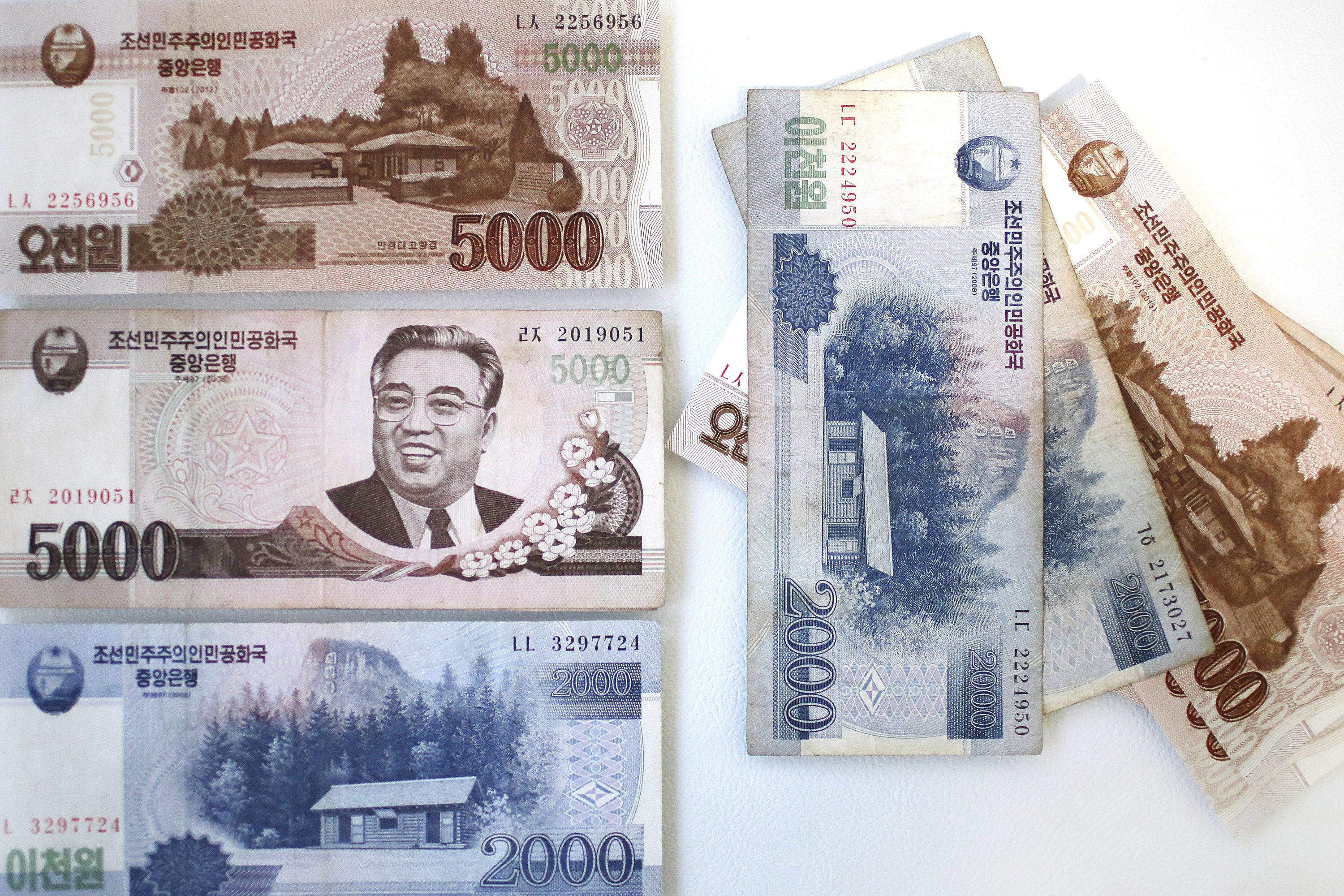

The text ‘Great Leader Comrade Kim Il Sung’s 100th Birthday’ is stamped below the coat of arms. This reprint is therefore in celebration of the Eternal President’s 100 th birthday. North Korea uses the ‘Juche’ calendar which pivots off the birth year of President Kim Il Sung (1912, or Juche 1). The notes featured in this post are special edition ‘Juche 100’ commemorative prints of this series, released in 2012.
#NORTH KOREA CURRENCY SERIES#
The current series of banknotes first circulated in 2009 when North Korea underwent a currency reform. Draped in a red ribbon are the words ‘Democratic People’s Republic of Korea’. Crop harvests of rice (‘golden soil’) enclose the emblem. Paektu (Korea’s most sacred mountain) and a hydroelectric dam representative of prosperity and self-sustainability. The emblem features the five-pointed red star, widely used to symbolize socialism. Banknote OverviewĮvery banknote includes the North Korean Coat of Arms in the top left corner. In this blog post, we explore North Korea’s current circulation banknotes and what they tell us about the country. Much can be learned of a nation’s contemporary values and ideals and North Korea is no different! Important people of history, political ideologies, national treasures, landmarks or flora and fauna are all commonly inked on banknotes. All over the world, banknotes illustrate national heritage and culture to be carried and changed hands for potentially generations to come. “Tears came out naturally.” Although the state of Kim’s health is normally a taboo topic in the North, the regime’s state media’s decision to run such interviews suggests that images of his slimmed-down appearance are part of a concerted propaganda effort to show that Kim is sharing in his people’s suffering.Currency is the perfect canvas to widely circulate imagery.


“We were most heartbroken when we saw our dear general secretary had become emaciated,” said a middle-aged North Korea man, referring to Kim by one of his official titles. Kim’s appearances have been accompanied on the North’s heavily censored state media by interviews with North Korean residents, who expressed their sorrow over the leader’s noticeable weight loss. Photographs of Kim at recent Workers’ Party meetings shows that he has lost weight, with close-ups by online outlet NK News showing that the strap on Kim’s preferred luxury wristwatch has been tightened. This is not a simple collapse - a serious disruption has occurred in the North Korean economic system.” As widespread hardship due to soaring food prices has been reported in North Korea, even North Korean leader Kim Jong-un has appeared in public in recent days, looking trimmer than usual. Kim Young-soo, professor of sociology at Sogang University, said of the current volatility, “The connected movements of foreign currency and grain prices has been severed. According to Daily NK, a website which tracks changes in North Korea, the North Korean won has risen approximately 30 percent against the dollar and 40 percent against the renminbi after the pandemic started. Still, with stricter controls on the use of foreign currencies, the yuan plummeted and became difficult to use,” the outlet reported on June 15. “Initially, there was a lack of trust in the Korean won, and everyone was trying to hold yuan and dollars to protect their assets. However, Japanese news outlet Asia Press, which relies on reports smuggled out of North Korea by market traders and business people, views the North Korean regime’s harsher restrictions on the use of foreign currency for purchases as the culprit behind inflation. “Whereas rice previously cost $0.50 to $0.60 per kilogram, the price has now risen to $0.90 to $1.40 per kilogram.” The report sees rising food prices as the consequence of a declining agricultural output, with the grain harvest in 2020 down 5.2 percent compared to the previous year. “A volatile situation where prices are still increasing despite a collapse in exchange rates in October continues,” the report says. “Analysis and Responses to the Third Plenary Meeting of the Eighth Session of the Korean Workers’ Party Central Committee,” the report by the Korean Institute for National Unification, highlights the twin problems of shortfalls in the North’s agriculture and an appreciating North Korean won vis-à-vis the Chinese renminbi and U.S. North Korea faces a deepening crisis of fluctuating currency and food prices due to international sanctions, continued restrictions on trade resulting from the Covid-19 pandemic and a declining agricultural harvest, according to a South Korean think tank’s report released June 23. North Korean leader Kim Jong-un in 2018 on the left and in 2021 on the right.


 0 kommentar(er)
0 kommentar(er)
